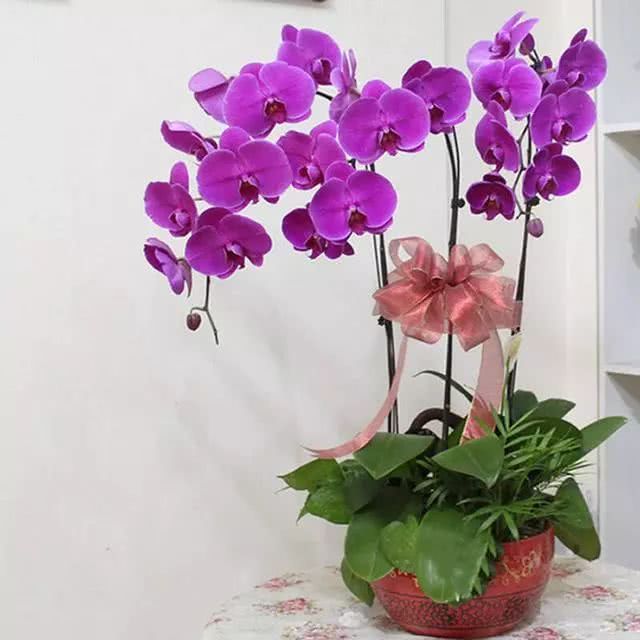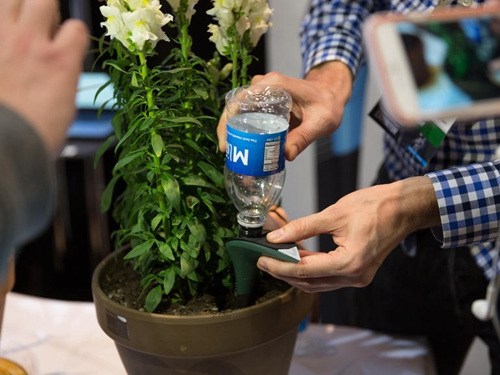What are the reasons why the leaves of potted Phalaenopsis turn yellow?

Phalaenopsis is no stranger to many flower lovers. It has rich colors, from pink, pure white to yellow, dark purple and so on. Because of its high ornamental value, Phalaenopsis can be seen in many flower shows around the world. And it has the laudatory name of "after the orchid". So Phalaenopsis in the cultivation of its leaves often appear yellowing phenomenon, what is the reason?
1. Improper moisture control
Phalaenopsis is a tropical plant, it is more suitable to grow in a humid environment, but it also has another weakness-fear of stagnant water. If the phenomenon of stagnant water occurs in the soil of Phalaenopsis, it will often lead to rotten roots in the roots of plants, which is often not reflected in a short period of time. In fact, it is only when the situation is more serious that the leaves turn yellow.
This often happens after the rainy season, without timely observation of the pot or soil, the pot is transferred to the right place. At this time, it is necessary to clean up the basin soil in time and cut off the diseased leaves. If the root system is rotten seriously, you can consider re-planting the plant.
Second, improper fertilization.
In addition to the stagnant water in the soil, improper fertilization is also another common reason. If it is found that the shape of the leaves is thicker than usual, and the stripes of the leaves degenerate more obviously, the leaves often turn yellow caused by excessive fertilization; at this time, you should immediately stop fertilization and properly water the potted plants in a suitable outdoor environment to ensure that the nutrients of the plants are consumed faster.
If the situation is too serious, we should consider the replacement of the basin soil, whether it is necessary to replace all the basin soil and retain the culture soil at the root of the plant, so as to ensure that Phalaenopsis can adapt quickly in the new soil.
Third, improper control of lighting
Phalaenopsis can not grow in strong light. If the leaves of plants are found to be softened and yellowed, it is likely to be caused by excessive light. If found in time, it is necessary to cut off the yellowed leaves, and then carry out appropriate watering and fertilization, and it is appropriate to grow in a semi-shady environment for 3-5 days. After the plant returns to normal shape, it will grow in a suitable light environment, especially in June-September every year, in order to avoid strong light, it can be shaded directly, while it can grow in full light in winter.
IV. Diseases caused by diseases and insects
If you don't have any big problems in your daily management, you should consider the damage of diseases and insect pests at this time. For example, common insects such as beetles, red spiders and aphids are the common enemies of most flowers. if they grow in dark, humid places, plants are likely to suffer from insect pests. Therefore, in the normal maintenance, it is necessary to control the humidity and light conditions of the plant environment; if the insect pests are more serious, certain pesticides can also be used to remove them.
- Prev

The 83-year-old woman came out stunned.
(warm Tip: please watch the video under WiFi) & nbsp; people have been busy, tired and running around all their lives, no matter how hard they are or how hard they are. People spend their whole life saving, no.
- Next

These two kinds of net water watering flowers is like watering paraquat and watering a dead pot. Don't ignore it.
Growing flowers is a very deep thing. Most people love beauty and will decorate their homes. Plants are living decorations, but many people find that they don't want to feed them until they buy them home.
Related
- Wuhan Hospital Iron Tree Blooming Result Was Instantly Frightened by the Gardener Master
- Which variety of camellia is the most fragrant and best? Which one do you like best?
- What is the small blue coat, the breeding methods and matters needing attention of the succulent plant
- Dormancy time and maintenance management of succulent plants during dormancy
- Minas succulent how to raise, Minas succulent plant pictures
- What are the varieties of winter succulent plants
- How to raise succulent plants in twelve rolls? let's take a look at some experience of breeding twelve rolls.
- Attention should be paid to water control for succulent plants during dormant period (winter and summer)
- Watering experience of twelve rolls of succulent plants
- Techniques for fertilizing succulent plants. An article will let you know how to fertilize succulent plants.

